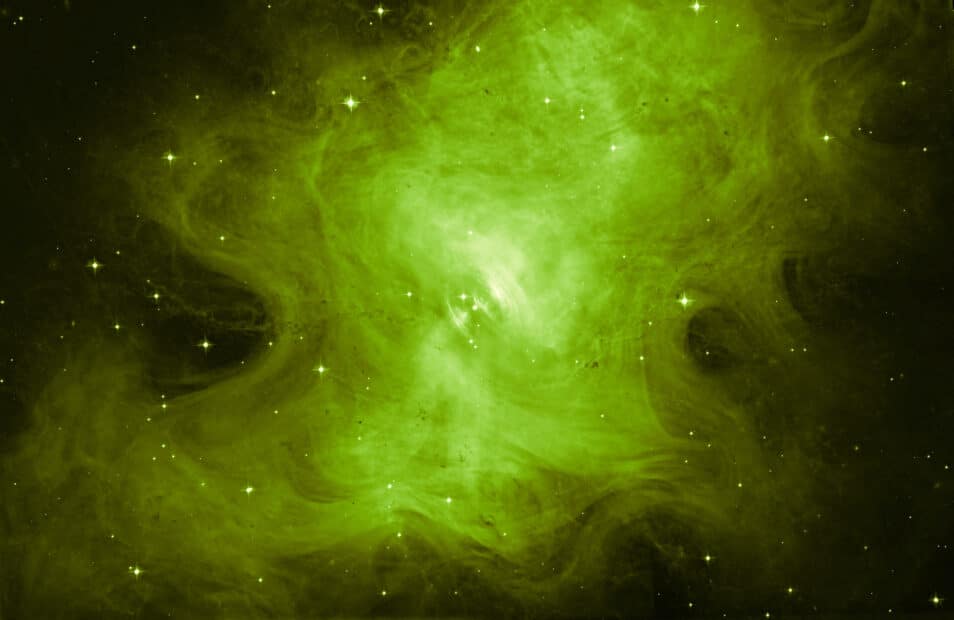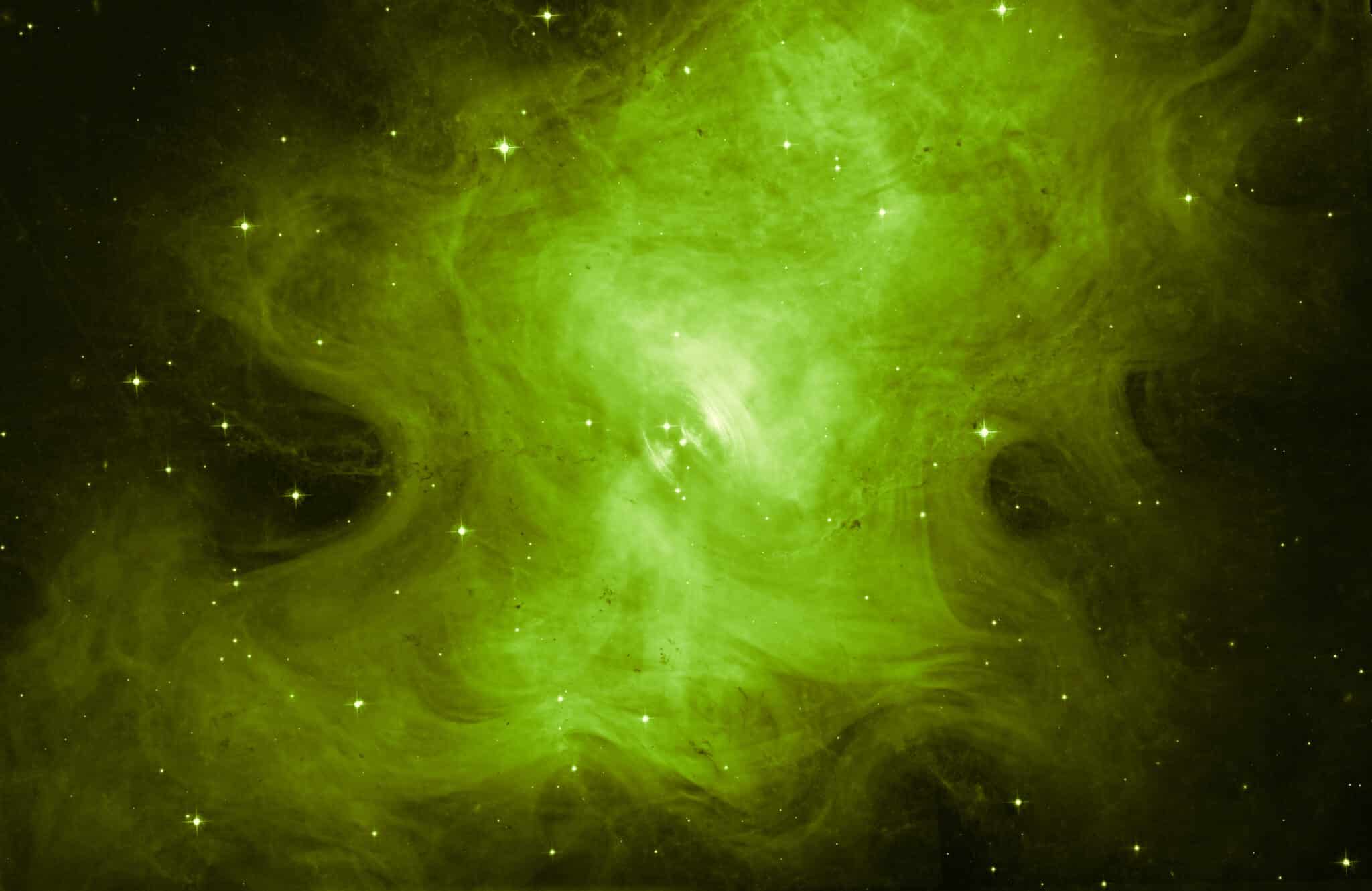The most famous supernova remnant is undoubtedly the Crab Nebula. In 1054 AD, Chinese astronomers saw a star explode. This explosion was so bright that the remnants of the star were visible with the naked eye during midday for 23 days. The remainder is now eleven light-years across and can only be observed with good binoculars or a telescope.
The Crab Nebula is located 6,500 light-years from Earth. In the center of the nebula, a neutron star rotates around its axis thirty times (!!) every second. This star is the same size Phobos – One of the moons of Mars – with a radius of about ten kilometers. Meanwhile, the neutron star is heavier than our Sun. A grain of neutron cannot be lifted, and it weighs more than a group of elephants combined. This neutron star affects the gas in the environment. You can see that clearly in this week’s space image, taken by the Hubble Space Telescope. Just look at the whirlwind around the center.

This image of the Crab Nebula is less chaotic and colorful than other images of the region, such as this particular shot from 2017. That’s because only one filter was used. This makes more small details visible that are shaded out in the color image.
When massive stars reach the end of their lives, they explode. What’s left behind is a collapsed core and this is what we call a neutron star. Neutron stars are the smallest stars ever to exist, but they are extremely dense. In addition, neutron stars are perfect spheres: the mountains in these stars are less than a millimeter high.
In 2016, the Hubble Telescope captured this beautiful image of the center of the Crab Nebula. In the core you see the neutron star. This star produces jets that are regularly ejected toward Earth. The star then pulsates at certain wavelengths, appearing like a cosmic beacon.

“Lifelong zombie fanatic. Hardcore web practitioner. Thinker. Music expert. Unapologetic pop culture scholar.”








